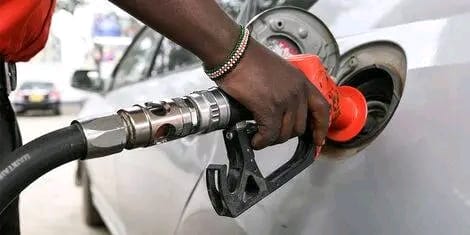
Fuel Prices Remain Unchanged in EPRA’s October Review.
Kenyans will continue to pay the same pump prices for fuel this month after the Energy and Petroleum Regulatory Authority (EPRA) retained current rates in its latest monthly review.
According to the announcement released on Monday night, the price of super petrol remains at Sh184.52 per litre, diesel at Sh171.47, and kerosene at Sh154.78 in Nairobi. The unchanged pricing will apply from October 15 to November 14, 2025, marking a period of price stability for consumers amid global market fluctuations.
Nationwide Prices Hold Steady
Across major towns, EPRA confirmed that the maximum pump prices will remain the same. In Mombasa, motorists will continue to pay Sh181.21 for petrol, Sh168.19 for diesel, and Sh151.49 for kerosene. In Nakuru, petrol will retail at Sh183.56, diesel at Sh170.87, and kerosene at Sh154.21 per litre.
For residents in Eldoret and Kisumu, prices remain identical at Sh184.38 for petrol, Sh171.68 for diesel, and Sh155.03 for kerosene. The rates include the 16 percent Value Added Tax (VAT) and all other applicable levies and margins in line with the current government taxation structure.
EPRA stated that its pricing formula considers several cost components, including the landed cost of imported refined petroleum, freight charges, exchange rate movements, and distribution margins. Kenya imports all its petroleum products in refined form through the Open Tender System (OTS), where suppliers compete for monthly cargo delivery contracts.
Stable Global Oil Markets Influence Decision
The decision to maintain current prices is largely attributed to stable global oil prices and relatively steady foreign exchange rates in recent weeks.
EPRA data shows that the average landed cost of imported petrol decreased slightly by 0.1 percent from US$620.84 to US$620.24 per cubic metre, while diesel costs increased by 1.57 percent from US$614.08 to US$623.75. Kerosene, on the other hand, recorded a 2.97 percent rise to US$627.72 per cubic metre.
The regulator also noted that the Murban crude oil benchmark—used for pricing in Kenya—averaged US$71.12 per barrel in September, a modest increase from US$69.81 recorded in August. Analysts say these minor shifts were not significant enough to warrant adjustments to local pump prices.
Global crude prices have remained stable in part due to controlled output by OPEC+ members and improved supply management, which have helped cushion oil-importing countries from sharp price hikes.
Mixed Reactions from Consumers
News of the unchanged fuel prices drew mixed reactions among motorists, public transport operators, and consumer rights groups.
While some Kenyans welcomed the stability as a temporary relief from rising living costs, others argued that current prices remain high relative to income levels. The Matatu Owners Association said it was relieved that no increase had been announced but urged the government to explore ways of lowering pump prices through tax adjustments or local refining options.
“This is not relief yet. The prices are still high for operators, but at least they have not gone up,” said one matatu operator in Nairobi’s CBD.
Consumer lobby groups such as the Consumer Federation of Kenya (COFEK) echoed similar sentiments, noting that while the freeze offers stability, sustained high prices continue to weigh heavily on households already struggling with food and transport costs.
EPRA Defends Pricing Formula
EPRA defended its pricing model, saying it ensures fairness and transparency in determining fuel costs across the country. In its statement, the regulator emphasized that the current formula protects consumers from extreme global price swings while ensuring oil marketers recover legitimate costs.
“The Authority remains committed to safeguarding the interests of consumers and investors by maintaining a balance between fair pricing and the sustainability of the energy sector,” EPRA said.
The regulator also reaffirmed that the fuel pricing framework is periodically reviewed to align with market realities and government fiscal policy.
Outlook: What to Watch Next Month
Experts say that while stability is welcome, several factors could influence future pricing reviews. These include global crude oil trends, shipping costs, the strength of the Kenyan shilling against the U.S. dollar, and any adjustments in local taxation or levies.
If the global oil market remains steady and the shilling stabilizes, Kenya could experience a continued period of price calm through the end of the year. However, any disruptions in oil supply chains or currency depreciation could push prices higher in subsequent reviews.
For now, motorists and households can expect a month of unchanged fuel prices, offering a brief respite amid wider economic pressures and rising costs of living.
Summary of Current Fuel Prices (Effective October 15 – November 14, 2025):
Product Nairobi (Sh/Litre) Mombasa (Sh/Litre) Nakuru (Sh/Litre) Eldoret (Sh/Litre) Kisumu (Sh/Litre)
Super Petrol 184.52 181.21 183.56 184.38 184.37
Diesel 171.47 168.19 170.87 171.68 171.68
Kerosene 154.78 151.49 154.21 155.03 155.03

